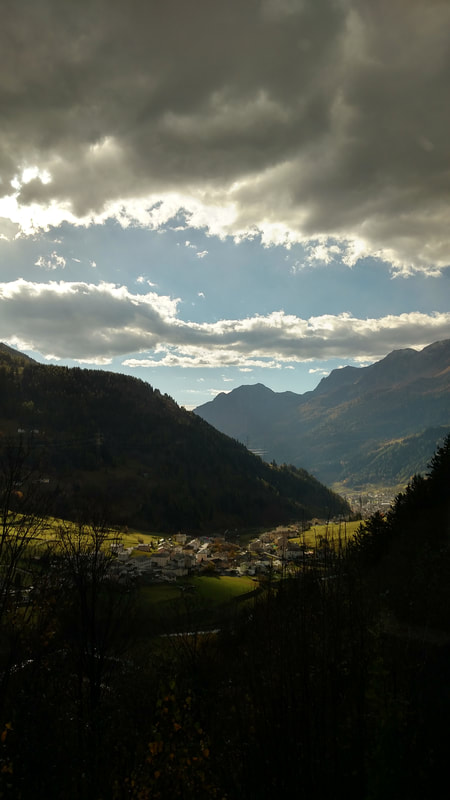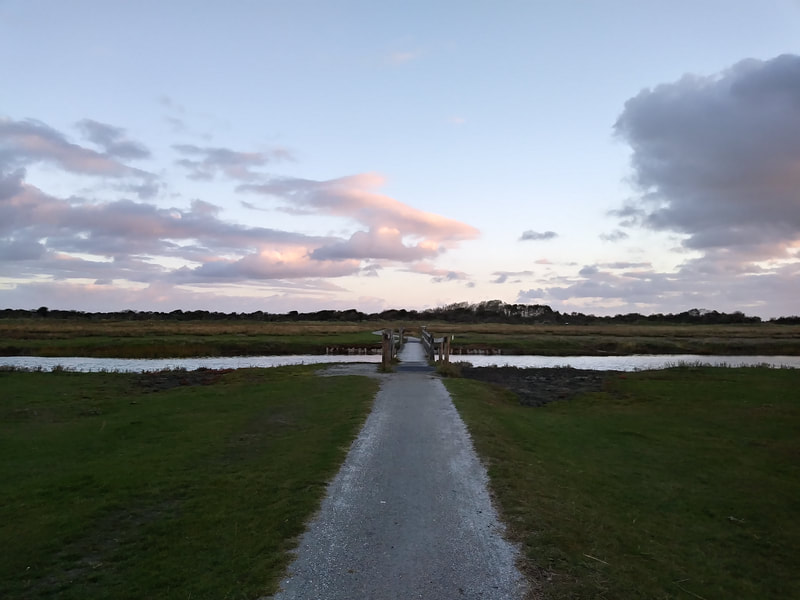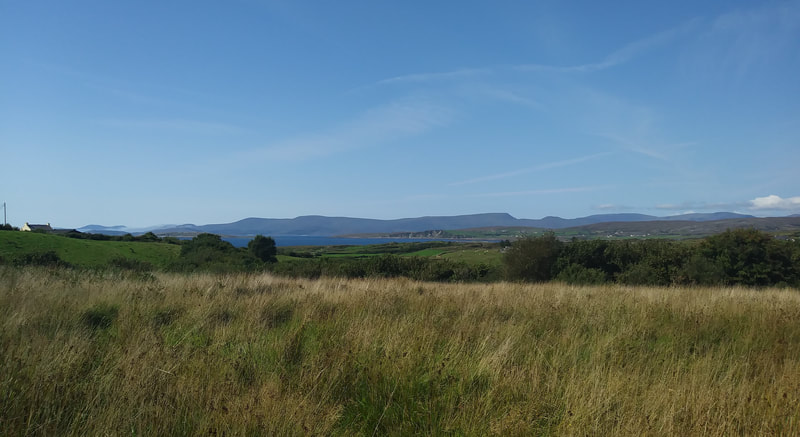Crosscut saws are a piece of technology made largely obsolete by the chainsaw. However, when trail crews are sent to designated wilderness areas where powered tools are not allowed, we must learn to contend with these unwieldy contraptions.
On Working in Wilderness Areas
Consider the crosscut saw. A single, jagged edge with two removable wooden handles, boasting such finely tuned teeth that, when sharpened properly, it can glide through the toughest wood with ease.
I first encountered this instrument while on a nine-day deployment with my crew (called, for inscrutable reasons, a ‘hitch’), during which we were supposed to clear a back-country trail of a substantial number of large trees felled by high winds. The blowdown had to be cut and dragged away from the trail to allow riders to pass through on their horses, no small feat when the trees blocking the path could easily top thirty inches in diameter. Complicating our assignment was the fact that we were working in a wilderness area, where power tools were prohibited.
‘Wilderness area’ is a special designation given to property owned by the Bureau of Land Management. The designation is encoded in the 1964 Wilderness Act, which seeks to preserve areas of the United States in an essentially ‘pristine’ state. At the time of this writing, the BLM manages 8.7 million acres as designated wilderness areas. As a part of their effort to maintain these tracts of land, the BLM has decided that power tools and motor vehicles are not to be used anywhere within their boundaries.
This includes chainsaws. Enter our crew. Most of us had never even seen a crosscut saw before; only one of us had ever used the thing. We preferred the noisy convenience of the modern chainsaw. And so, when we set out the first day with the bendy, long metal panels slung over our shoulders, we felt like we were walking both up the mountain and back in time.
The crosscut saw is a long, flat piece of tempered steel, straight or bowed slightly downward on its non-toothed edge and bowed out in an arc on the toothed side. The teeth alternate between two-pronged ‘rakers’ reminiscent of a dangerous mermaid’s tail and single-pointed daggers that slice into the wood. The teeth are separated by arcs cut into the metal, spaces just large enough to fit one’s fingers into, all the better to carry this unwieldy and very sharp instrument. Wooden handles screw onto each end –horizontally or vertically, all the better to gain traction on uneven slopes or where the log is dangerously close to touching the ground. The saw cuts through wood, and wood only – dirt, bark, and gravel all quickly dull its cutting edges – so its users must prepare the tree to be sawed by stripping it down to its soft inner layers, the cambium, or the heart - sometimes using a specialized bark- peeling tool, but more typically with the aid of a carefully-wielded axe.
The first thing you notice working in a wilderness area is what you don’t notice - cars, ATVs, power tools, campers arguing over what to cook for dinner. Thanks to their remoteness and lack of services, the wilderness areas where my crew worked were generally only frequented by dendrologists and dedicated groups of hunters. The woods were not silent, however; the screams of birds and mating calls of frogs and insects kept up a constant background of noise. And whenever we camped next to a river the roar of water rushing over stones offered a constant .
Over this backdrop of natural noise, the ring of the crosscut as it pulls through a meaty piece of wood travels like a bell from a tower. Like the sound a wine glass makes if you wet your finger and trace it, deliberately and patiently, along the edge. Soft at first, barely noticeable, so quiet you think you might be imagining it. But then, as the energy builds, the ringing gets louder. So it is with the crosscut, bisecting a fallen tree in long, deliberate strokes, gradually gaining confidence until it is singing, singing with each pass of the tempered steel blade through the buttery-soft wood. The song cuts through the noise of the birds and creates a music of its own. You think yourself a magician, that you could have conspired so with this blade and this tree to make them sing.
As the saw draws closer and closer to the bottom of the tree, the popping begins.
Once, then again, then several in a row. This is the tree settling, and a sign that the downhill sawing partner needs to get out of the way. Depending on how the tree is bound by the landscape onto which it has fallen, the trunk might fall straight down, or snap sideways, or even pop up as the sliver of wood connecting the two pieces grows slimmer. Better to be safe than sorry, so the downhill person removes his handle from the saw and climbs out of the way while the other partner finishes the job. The rakers, which before had drawn out long, elegant strands of tree, now pull out small shavings more reminiscent of an ordinary hand saw. The tree continues to pop, then groan, then crack, as the uphill partner continues to saw in smaller and smaller motions.
For anyone with romantic notions of wilderness as a pristine area untouched by human hands, consider that wilderness is a very recent creation. The national parks were first envisaged in 1872 with the creation of Yellowstone National Park. But national parks were not meant to be protected from humans; rather, they were recreational, places for people to come and enjoy the natural world. Wilderness as a concept in American natural lands management was not invented until 1964, in response to growing concern that Americans were losing their understanding of and appreciation for nature.
Wilderness, as we do it in the United States, is like a terrarium; a very large terrarium to be sure, but just as managed and carefully cultivated as any terrarium set up to promote a particular image or idea.
The image being cultivated in the Sangre de Cristo wilderness area was supposed to be of an untouched wildness. The trail corridors, though carefully maintained at ten feet high and six feet wide (tall and wide enough for a horse and rider to pass through) had to look as though they had just ‘appeared’ there, not influenced by human hands. Our crew was sent in with our singing crosscut saws to carefully manicure the landscape while leaving no evidence of our passage.
As the popping and cracking finally give way to that final crack, when the tree relents and separates into two, the person holding the crosscut is put in a difficult position. She must maintain her composure and her grip on the saw even as a rather large log comes crashing down literally at her feet. The best way to do this is to simply grasp the top of the sawblade with one hand while maintaining a grip on the handle with the other.
Letting the saw buckle at this point could be fatal to its delicate teeth; if bent even a little bit, they will have to be re-hammered by one of the three or four blacksmiths who still knows a thing or two about crosscut mechanics. It won’t cut another tree until then. On a work hitch six miles up a mountain trail in the middle of a vast wilderness area, we must be careful. And patient.
The log falls, and if all goes well, the saw is wrapped in its rubber and burlap cover and set aside. Then, the business of making our presence invisible begins. Any brush that can be carried must be transported at least thirty paces from the trail and preferably dropped behind some large rock formation to hide it from passers-by. The larger trees, if they can be hoisted, must be turned away from the trail so the cut end is no longer visible. If they cannot be hoisted, rubbing the wounded tree with dirt or burying it slightly in the ground to make it look as though it had been there for a long time is also acceptable. These are the conditions laid down by our project sponsor at the Bureau of Land Management.
As the days pass, dragging the evidence of our passage away from the trail becomes a habit – even small bits of discarded brush seem obvious, and we feel the urge to cover up even the smallest sawing jobs with mud. We are mercenaries, moving trees from where they have naturally fallen and placing them in semi-believable poses more convenient to visitors. In this way, working in a wilderness area was hardly different from working on a massively scaled garden, maintaining an image of wilderness in an area manicured specifically for human consumption.



